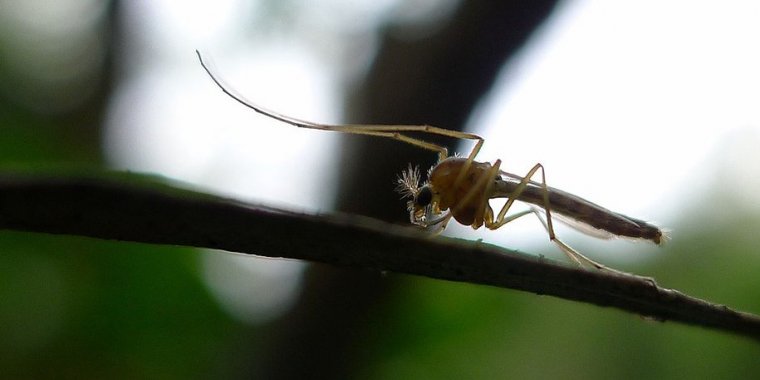| News / Science News |
‘Aquatic insects can warn against cholera outbreaks’
Chironomids, a group of aquatic insects closely related to mosquitoes, act as natural reservoirs of disease-causing cholera bacteria and can forewarn against possible outbreaks of the diarrhoeal disease, a new study suggests.

A non-biting midge, a type of chironomid. Photo: John Tann
Cholera— caused by the ingestion of food and water contaminated with Vibrio cholerae — infects an estimated 1.3 to four million people around the world annually, resulting to as much as 143,000 deaths.
Cholera is endemic in 50 countries, mostly in Africa and south and South-East Asia. According to WHO, of the many serogroups of V. cholerae, only two, O1 and O139, cause outbreaks.
Israeli researchers Meir Broza and Malka Halpern had reported earlier that chironomids harbour V. cholerae. But the new study, published 23 December in PLOS Neglected Tropical Diseases, establishes that chironomids form reservoirs for the toxigenic [cholera toxin-producing] serogroups O1 and O139.
The researchers assessed chironomids’ capability to act as natural reservoirs of epidemic- and pandemic-causing O1/O139 serogroups of V. cholerae, by using molecular tools. They looked at 223 chironomid samples collected from India and Israel and found “the presence of V. cholerae serogroup O1 and cholera toxin genes in samples from all chironomid species”.
However, V. cholerae serogroup O139 was detected in only two chironomid species, the researchers wrote in the study.
According to Halpern, an environmental microbiologist and a professor at the University of Haifa, monitoring and controlling chironomid populations in cholera endemic areas could potentially help predict and control outbreaks of the disease. She explains that chironomid populations peaked in spring and autumn followed by a relative increase in V. cholerae abundance in the insect.
“Cholera epidemics in the Bengal delta region also show a similar pattern of biannual [every spring and autumn] peaks,” she notes.
Thus, a rise in chironomid populations in a cholera endemic area can predict a rise in V. cholerae abundance, Halpern tells.
“[This] paper will bring new insights to a broad scientific community dealing with infectious diseases (e.g. epidemiologists, physicians and microbiologists) and may have an impact on [the] understanding of cholera pandemics, says senior co-author of the study, Bimalendu Nath, emeritus professor, department of zoology, Savitribai Phule Pune University, India.
“[Sampling] cum surveillance programme for chironomid population in different endemic areas of [cholera] in different parts of the world can be formulated which will be a novel tool for predicting the outbreak of cholera epidemics,” Nath tells.
Anil Kumar, clinical professor and head of the department of microbiology, Amrita Institute of Medical Sciences, Kerala, India, comments that the study provides ‘proof-of-concept’ to use chironomid populations as a surrogate indicator for predicting cholera outbreaks.
However, Kumar notes that despite finding V. cholerae in most of the chironomid species in the study samples, there were no reports of outbreaks.
“Therefore, the concept of using chironomid as a surrogate indicator for predicting cholera outbreaks needs to be tested in [cholera] endemic areas,” he tells. (SciDev.Net)
YOU MAY ALSO LIKE





